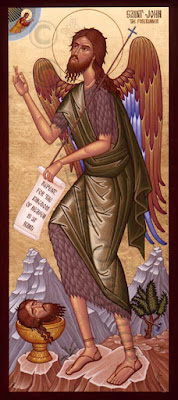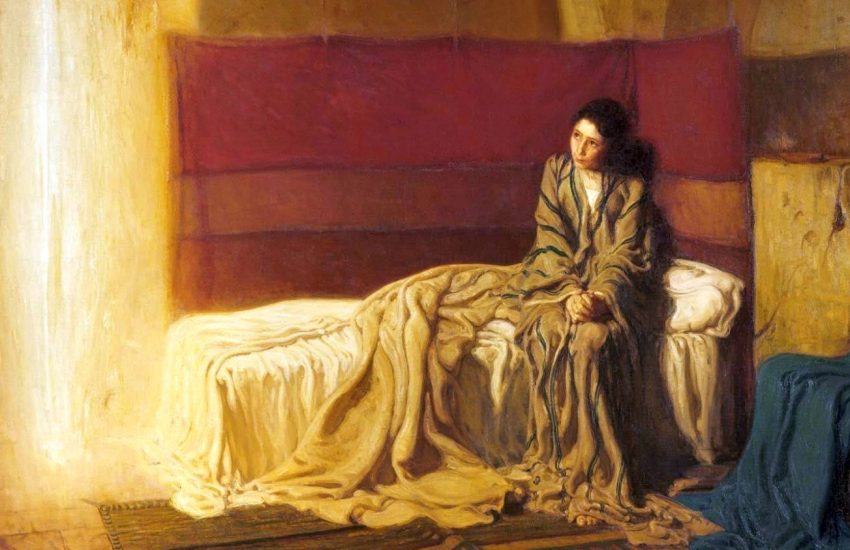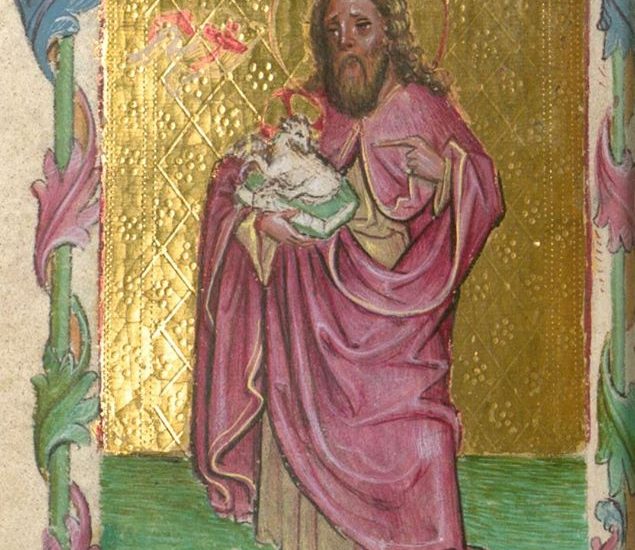Discerning What is of Value
SECOND SUNDAY OF ADVENT (C)
click here for readings
 |
| St. John the Baptist |
Advent is a season of preparation for the coming of Christ. We prepare to celebrate the great feast of Christmas, commemorating His coming in history in Bethlehem. But we also prepare for Christ’s second coming at the end of time in all His glory. Because of this, the readings during Advent, especially during the start of the season, tend to be rather apocalyptic. Consider last week’s gospel reading when Jesus warned of chaotic signs, people dying of fright, and “the Son of Man coming in a cloud with power and great glory” (Lk 21:25-27).
So we might read the words of John the Baptist in this Sunday’s gospel as also being apocalyptic. He quotes from Isaiah when he says, “Every valley shall be filled and every mountain shall be made low” (Lk 3:5, cf Is 40:3-4). We may imagine mountains crumbing to the ground and valleys being filled with their rubble as the earth shakes at the second coming of Christ. But that is not what John the Baptist, nor the prophet Isaiah, means to tell us. John is not foretelling the end of the world. He is telling of the salvation of the world. He is not telling of an event that will happen millions of years from now. He is speaking of something imminent; something happening now that people need to be aware of. And he is not warning them of their doom and destruction, but giving them a cause to celebrate.
Prepare the way of the Lord,
make straight his paths.
Every valley shall be filled
and every mountain and hill shall be made low.
The winding roads shall be made straight,
and the rough ways made smooth,
and all flesh shall see the salvation of God (Lk 3:4-6).
In our second reading this Sunday, St. Paul offers his prayer that our “love may increase ever more and more in knowledge and every kind of perception, to discern what is of value” (Phil 1:9-10). St. Paul prays for us to love properly. Love for what is evil is a disordered love. If we learn to love that which is wrong, that which is harmful, we do damage to ourselves. This is why St. Thomas Aquinas said that we offend God when we act against our own good (SCG III, 122). We need to learn to love that which is good, true and beautiful. We need the knowledge and perception that St. Paul speaks of so that we can discern what is of true value, and there direct our love.
In the past — and for so many still today — the path to discern what is good, true, and beautiful has been a rough and winding path. Life could be like that old Johnny Lee song, “Looking for love in all the wrong places…” Discerning the good and true could be like finding one’s way through a maze of different philosophies, different perspectives, different goals, and different desires. How do we know where to find the ultimate answers to our questions? How do we know what to love?
John the Baptist announces for us today what he announced to the Jewish people 2000 years ago. Those winding roads will be made straight for us. The rough roads will be made smooth. The mountains will be made low and the valleys filled in not by way of destruction but in order to make a straight and level path between us and the object of our highest love. Our difficult quest to discern what is of ultimate value, so that we may love it, is about to be made much easier for us.
It is said of John the Baptist that no one is greater who was born of women (Mt 11:11). Yet in next Sunday’s gospel, on the third Sunday of Advent, we will hear him say, “one mightier than I is coming.” John is very good, but he is so because he recognizes and loves the greatest good. John’s role is simple. He points to Jesus. He points to Christ and says, “Behold the Lamb of God who takes away the sin of the world!” (Jn 1:29) — the same words the priest says after he consecrates the Eucharist and Christ comes to us once again in the sacrament.
Like those who lived before John the Baptist, we still need to discern what is of value and thereby grow in love. But unlike them, we need not wander in the wilderness. We need not “look for love in all the wrong places.” The path has been made straight for us. John points us to what (Who) is of ultimate value, and therefore worthy of ultimate love. Here He is, John tells us. Here is your God. Here is your Creator, your Redeemer, your Sanctifier. Love Him, for He is Love.
St. Augustine said, “love God, then do as you will.” He said this not as an excuse for immorality (it doesn’t matter what you do, if you love God), but as a sure guide for morality (if you love God, you will want to do only what is pleasing to Him). Our lives become ordered when our loves are ordered. Love is ordered only when we love what is good, and we should love the highest good above all else. Where do we find the highest good? Where do we place our highest love?
Since that first Christmas 2000 years ago, we have lived in the Age of Incarnation. The highest good, the object of our highest love, was made man and born to a Virgin. John the Baptist points Him out — Behold, the Lamb of God. He is still with us today in the Church, in Her sacraments, and especially in the Eucharist. He is with us in our neighbors and our families. Do we recognize Him? Do we love Him? We need no longer search vainly in the wilderness for the proper object of our love. Jesus makes straight our path. John points it out. It is up to us to choose to follow it.


